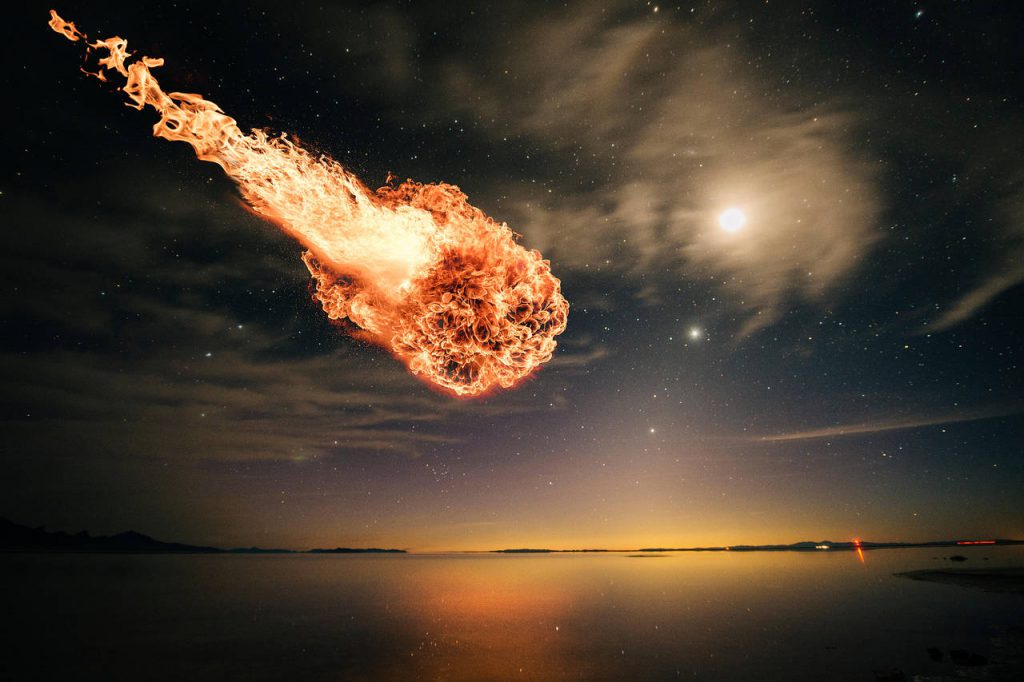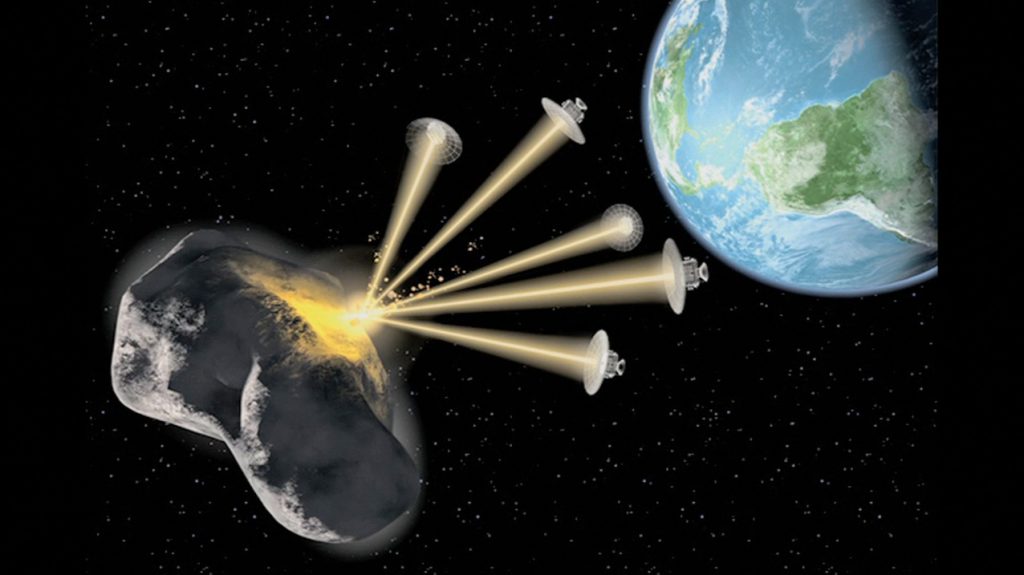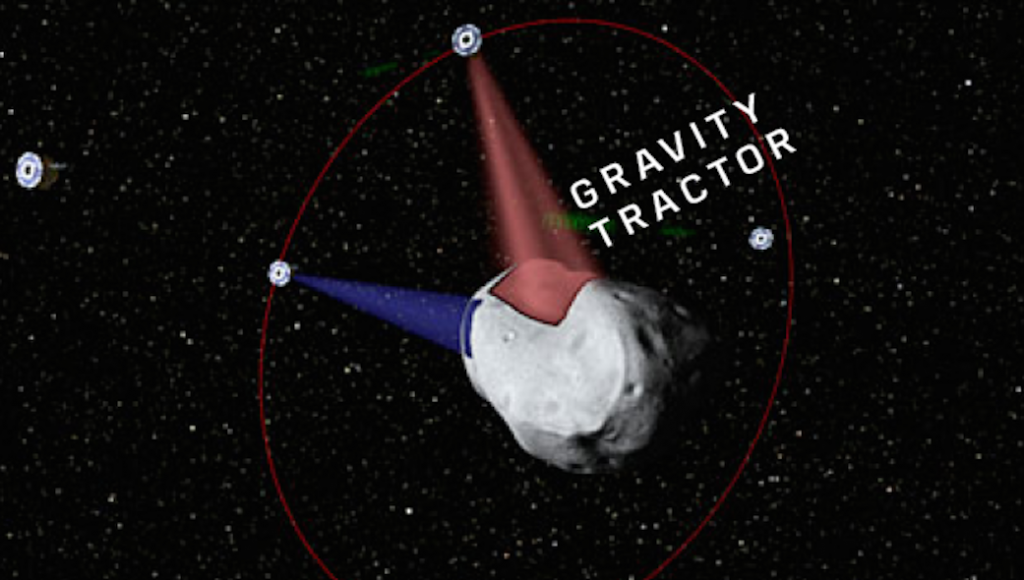Asteroids: an interactive walkthrough
A story by Chirantan Ganguly & Mahima Banerjee
It was a bright Sunday morning during New Year’s week and Dr. Marcus Xavier was home after almost 2 months. Dr. Xavier’s son Quinn, a 14-year-old intelligent and dutiful boy, is a senior in middle school. He always had a knack for the sciences and he is particularly fond of studying Physics in his school. Quinn’s love for the sciences was instilled in him by his dad from a very young age. Dr. Marcus Xavier is a Space Scientist at NASA and because of his thorough involvement in tackling the challenges as a part of his job, he could not spend the time he would have liked to, with his son in his formative years. However, he has certainly evolved as a role model for Quinn, both as his father and as a scientist.
Dr. Xavier had always nurtured Quinn’s love for science so he planned to take Quinn to a science exhibition. Quinn, however, suggested that he wanted to visit the Space Museum at NASA as he had developed an interest in astrophysics and wanted to get a taste of the work his father does.
Dr. Xavier seemed particularly pleased that his son had picked such a great location to spend some time together. As Quinn and his father passed through the enormous double doors of the Near-Earth Objects section at the far end of the Space Museum, a painting caught Quinn’s eye. It was an artist’s impression of a huge red ball of fire hurtling towards the Earth. It made Quinn feel uneasy, and he asked, “Dad, what is that painting about?”

His dad replied, “That is an asteroid, son. Asteroids are like semi-planets that also orbit around the Sun, just like the real planets, in the asteroid belt which lies between the planets Mars and Jupiter. Some of the asteroids, however, get nudged off their path by the large gravitational attraction of massive nearby planets, which eventually lead them to enter the Earth’s neighbourhood, these are called the Near-Earth Objects. Of these, the ones which are larger and have their orbits crossing the Earth’s are considered dangerous! As they can very well collide with our lovely planet!”
Quinn asked, “How grave is the danger posed by them, dad? Like, what will happen if they hit our planet?”
Dr. Xavier nodded and continued, “Asteroid impacts with Earth are not a new phenomenon; they have impacted the planet a lot of times throughout history and have been linked to the development of a variety of things such as the Earth-Moon system, they may be partially responsible for some of the water on Earth, and have caused several mass extinction events. The Cretaceous-Paleogene extinction, which occurred around 66 million years ago, wiped out around three-quarters of plant and animal species, is the most well-known of such phenomena. This was triggered by a large asteroid with a diameter of around 10 kilometers that collided with the Earth in the Gulf of Mexico. So, you see, asteroid impacts have been both a blessing and a boon. Just like some asteroids filled our planet with water in the past, which is essential for life, some have resulted in the wiping out of three-fourth of all life on earth at that time.”
The curiosity and fascination in the eyes of Quinn were unmistakable, and that indeed made Dr. Xavier very happy, as he could see that his son was developing a similar interest in extraterrestrial objects like he had himself as a kid.
The two then moved on from in front of the picture and came across a model of a large asteroid, its shiny nameplate read ‘Didymos (65803)’.
Dr. Xavier narrated, “Didymos is an extremely large and important asteroid, it is about 750 meters in diameter.”
“You know what, let me show you something interesting!” Dr. Xavier exclaimed, “You know, many organizations are now trying to test new innovative techniques on how to push an asteroid off its path. This development is really very important, as we certainly don’t want to have a similar fate to the dinosaurs. So, researchers all around the globe are trying various techniques on this particular asteroid. Would you like to know how scientists plan to do that? These techniques are no less exciting than the Marvel movies you watch!” Quinn nodded in excitement and said, “Yes dad! Tell me more about it, it sounds almost like a sci-fi movie!”
Dr. Xavier continued, “The Double Asteroid Redirection Test, also known as DART, is a famous project on which both NASA and the Johns Hopkins Applied Physics Laboratory scientists are working on. It involves a number of tests aimed at avoiding an asteroid collision with earth. The near-Earth asteroid, Didymos, as you can see in this model, will be used to test DART since it belongs to the class of asteroids that are most likely to pose a threat to our planet. It is the first of its kind to test a technology called the ‘kinetic impactor technique’ which could potentially be used to strike the asteroid off its current trajectory. In the year 2019, NASA announced that DART would be launched aboard a SpaceX Falcon 9 launch vehicle which will take about a year to reach Didymos.”
Quinn asked, “Why do we have to push the asteroid? Why can’t we just decimate it? Like ‘poof’ and it is gone”, as he made an expression of blowing something up with his hands.
His dad smiled and explained, “It isn’t that simple, but, yes, we do have a plan like that. Scientists have thought of fitting nuclear explosive devices, nukes as some call them, at some height above the asteroid and setting the explosion. The heat generated from the explosion would lead to a reduction in the mass of the asteroid, which would create a force strong enough to push the asteroid off its path. In another method, called the “standoff approach”, we would carry out a series of nuclear explosions to achieve the same.”
Quinn remembered something he learnt in school and asked, “Aren’t nuclear explosives unsafe? What if an accident happens?”
Dr. Xavier commended his son for thinking about the safety concerns as well, “Yes, nuclear explosives are indeed dangerous and it is also quite risky manufacturing them. That is why in the “standoff” approach, we could also use non-nuclear explosives instead of nuclear ones. However, the nuclear ones are 10 to 100 times stronger, so they would be more effective”.

Quinn saw another picture of a beam of lasers being focused on an asteroid, he pointed it out to his dad and asked him, “What’s that dad? Can we use lasers, too?”
Dr. Xavier explained, “We certainly can, but those are like REALLY powerful lasers. Using powerful lasers we can heat the surface of the asteroids up and thereafter convert the heated material to gas by evaporation. The ejected material due to this heating produces a push, which is strong enough to alter the asteroid’s path over time. Travis Brashears, a researcher at UC Santa Barbara’s Experimental Cosmology Lab, has already demonstrated this brilliant idea on a small scale and has uploaded a snippet of his team’s brilliant experiment on Youtube. Travis’ team have demonstrated that heating asteroids up by laser can slow or fasten the spin of asteroids, thereby effectively changing their courses. UC Santa Barbara, NASA, and the University of Strathclyde are all working on further testing and improvement of this ingenious technique.”
Quinn had a new question, “Dad, has an asteroid ever hit earth since human existence?”
Dr. Xavier answered, “Yes, they certainly have. You see, asteroids hurtling towards the Earth are not that uncommon at all. As a matter of fact, plenty enter the Earth’s atmosphere regularly and get burnt up before reaching Earth’s surface. The big ones though make it past the atmosphere and can even impact the surface. In Chelyabinsk, Russia, in 2013, a giant meteor exploded as a fireball in the sky, which injured hundreds of people. And in 1908, a larger asteroid hit the Earth’s surface near the Tunguska river in Russia. It was the largest known impact event in recent times. Not to sound scary, but if the Tunguska asteroid was 4 to 5 hours late, it would have hit the city of St. Petersburg, a densely populated city, causing as much life and economic damage as a nuclear explosion!”

Quinn listened to his father’s words very carefully and understood the seriousness of the situation. He asked, “Are there any other methods which the scientists have thought about?”
“Yes, there are a few. Researchers H.J Melosh and I.V. Nemchinov have thought of partly vaporizing an asteroid by concentrating solar energy on it. There are always new ideas budding up as the domain of asteroid impact aversion is gaining popularity and researchers are spreading awareness about the need for it. I, too, believe we should be prepared for the worst, hoping it never comes to that. Moreover, there is the gravity tractor technique, which involves sending some specialized spacecraft to orbit around asteroids, thereby affecting their gravity and causing a change in their trajectories. All these techniques are really very fascinating!”
“Dad, why do we shift the asteroid instead of blowing it up completely? If we don’t shift it much, it might impact somewhere else on Earth. How does it solve the problem?”
“Good question, do you know that former NASA astronaut, Rusty Schweickart, has stated that the gravity tractor technique is controversial as, while shifting an asteroid’s trajectory, the location on the Earth where it would most likely hit would be slowly shifted across different countries? There are a number of limitations and risks accompanying each of these methods of approaches. However, we have to be prepared for the most catastrophic situations, and, for that, accepting these risks is inevitable.”
Quinn asked his dad, “Aren’t all these technologies very expensive? How can we go around blowing up so many asteroids and shifting their paths?”
Dr. Xavier replied, “Great question, son. It is not just economically unsustainable to blast every asteroid near us, it would be utter foolishness to do so. You see, not all of these asteroids pose a threat to Earth, as their paths do not intersect with our orbit around the Sun. In fact, scientists study all these near-Earth objects carefully using telescopes and calculate their impact probability with Earth using computational tools. There are dedicated observatories around the globe that do this every day. Some of the most successful projects observing the skies for these potentially hazardous asteroids are the Lincoln Near-Earth Asteroid Research project, the Catalina Sky Survey, the Spacewatch, and the Near-Earth Asteroid Tracking project. These together are kind of like the intelligence agency for any army, who analyze the threat the enemy poses before launching an attack.”
They were now at the end of the NEO section of the Space Center. Dr. Xavier observed Quinn thinking deeply about all that he saw and learned today. Dr. Xavier asked Quinn “So, what are your opinions about the things you learned today? Do you think we should actually invest in building something which feels so scifi-like and needs such large investments when there are so many problems back here on Earth?”
Quinn reflected on his father’s words and expressed, “Science and technology have never been as advanced as they are now, as we are making progress in every domain of science. So I think we should also dedicate some of our effort to eliminating any external threat that may be posed by asteroids. I think just as we allocate some of our money to buy proper security equipment for our home, and just as any country has a military budget to save it from external threats, we all must jointly agree to dedicate some of our efforts and resources towards the development of space security techniques to protect our common home Earth from these external threats while handling internal problems. No matter how small the probability of an asteroid collision may be, it is in our best interest to be prepared beforehand to save our planet from being destroyed”.
References:
- https://www.bbc.com/future/article/20160510-what-we-would-actually-do-to-stop-a-doomsday-asteroid
- https://en.wikipedia.org/wiki/Asteroid_impact_avoidance
- https://news.mit.edu/2020/how-deflect-asteroid-mission-0219
- Harris, A.W., Boslough, M., Chapman, C.R., Drube, L. and Michel, P., 2015. Asteroid impacts and modern civilization: Can we prevent a catastrophe?. Asteroids IV, pp.835-854. http://www.uapress.arizona.edu/Books/bid2555.htm
Mahima Banerjee is a Chemical Engineering undergrad at the University of Calcutta. As a Research Associate for the BMSIS Young Scientist Program, she has worked under the guidance of Dr. Dimitra Atri on Radiolysis and energy-generating mechanisms for the sustenance of life in outer space
Chirantan Ganguly is an undergraduate student of Electronics and Communication Engineering at the University of Calcutta. As a Research Associate for BMSIS Young Scientist Program, he has worked under the guidance of Dr. Anamaria Berea on the study of the characteristics of communication in complex systems.
